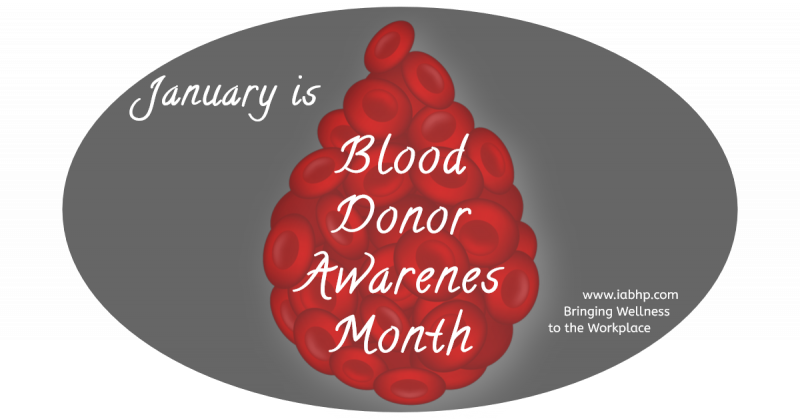
That’s just one of the reasons that National Blood Donor Month, which has taken place each January since 1970, is such an important observance. Donating blood saves many lives and improves health for many people. According to the World Health Organization, “blood is the most precious gift that anyone can give to another person — the gift of life. A decision to donate your blood can save a life, or even several if your blood is separated into its components — red cells, platelets and plasma.”
How to Observe National Blood Donor Month
1. Donate
Not just in honor of National Blood Donor Month, but in the simple spirit of providing the stuff of life to those who need it most. Donate now. Donate again in eight weeks. Repeat.
2. Inspire
National Blood Donor Month can inspire people to donate. And those donations can in turn inspire others to donate, creating an exponential increase in blood donations when and where they’re needed the most.
3. Learn and remember your blood type
What’s your blood type? Some examples: O positive donors are needed more often than other blood types. O negative donors are considered “universal donors.” AB positive donors are “universal recipients.”
5 Amazing Facts About Blood Donations
1. Not enough blood for all of us
According to the American Red Cross, about 38 percent of the U.S. population can donate blood — but only 10 percent actually do.
2. Fill ‘er up with regular — donations
Brookhaven National Laboratory says that people who begin donating blood at age 17 and donate every eight weeks will have donated 48 gallons of blood by age 76.
3. Donate blood and get medical info
When we donate blood, labs examine the donation for multiple infectious diseases, such as HIV and West Nile virus.
4. Dogs can donate, too!
Your dog can donate blood, too. Check with your veterinarian and the Humane Society to make sure you know the local rules and regulations for this type of donation.
5. The multiplier effect is huge
Every time we donate one pint of blood, the potential is there to save three lives.
Why National Blood Donor Month is Important
A. Donating blood save lives
Someone needs blood every few seconds in the United States. And more than 4.5 million Americans would die every year without lifesaving blood transfusions. National Blood Donor Month helps us remember these vital statistics.
B. It’s the gift that keeps on giving
The American Red Cross needs 13,000 blood donations every single day to maintain an appropriate blood supply. Fortunately, eligible blood donors can donate blood every eight weeks.
C. It’s good for donors, too
The American Journal of Epidemiology reports that blood donors are 88 percent less likely to have a heart attack.
